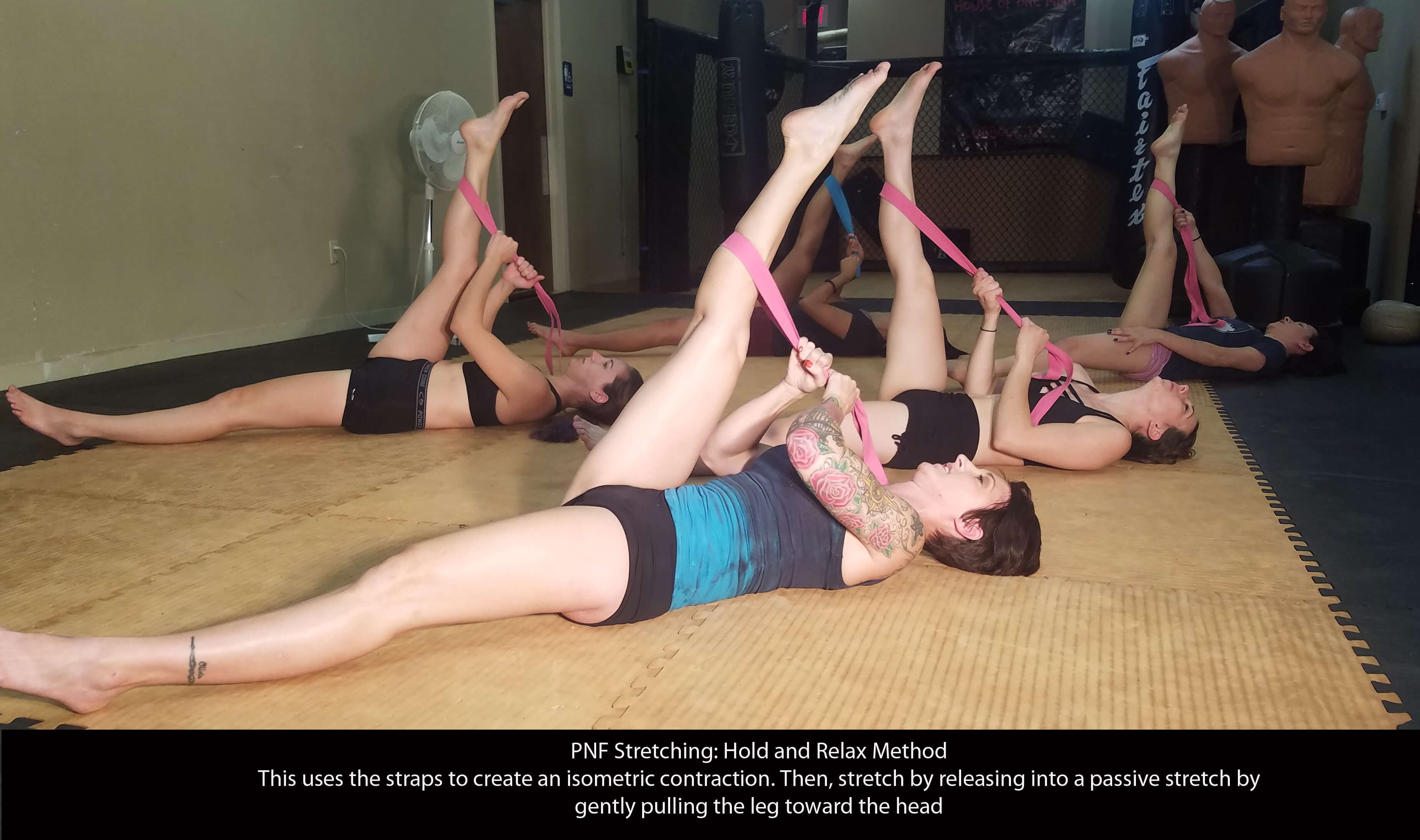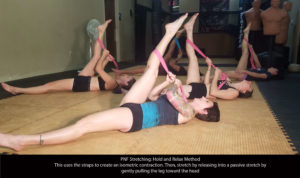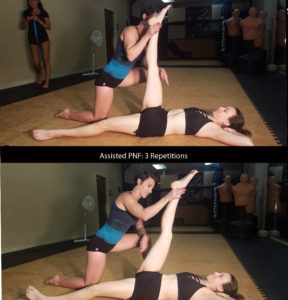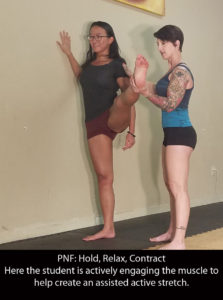
The One-Stop Guide to Flexibility Training
The standard process of warming up the body a bit then doing static stretching for increased flexibility before an activity is becoming increasingly outdated. Many of us, as young athletes and fitness professionals, were taught that this is the proper way to prepare to exercise. We also learned to increase flexibility by forcing our body into a position and holding it there. These were industry standards. Research, however, is changing this concept. It is Important to adapt to evolving information to stay at the peak of your athletic abilities and prevent injury. We are going to take a new look at three different aspects of stretching and flexibility: the warm-up, for increased flexibility, and injury prevention.
Terminology.
Ballistic stretching
– This uses momentum to force the muscle beyond the extent of its current range. This is best visualized by thinking about kicking your leg up with force until it passes its normal extension.
Dynamic stretching
– This is a moving stretch that gradually increases the extent of the stretch and the speed in which it is done. I like to use sideways moving lunges as a form of dynamic stretching.
Active stretch
– Using muscle to move in to and hold a stretch. This brings to mind dancer and gymnast lifting and holding the leg in positions by just the strength of the muscle.
Passive stretch
– This occurs when you use an object to assist in creating the stretch. An example would be pressing into the floor to achieve a split.
Static Stretching
– This is the stretching standard of pressing into a stretched position and holding for an amount of time.
Isometric stretching
– Being in a stretched position and engaging the muscle at the same time. An example of this would be pressing into the floor achieving a split then engage the muscles of the legs to press against the floor.
The Warm Up
Warming up the body before exercising or training is imperative to performance and injury prevention, but static stretching is no longer considered the best way to improve mobility before exercising, training, or performing a physical activity. Static stretching still has its place in flexibility but needs to be relegated to post activity. Studies have shown that pre-activity static stretching can decrease strength by up to 30%. Static stretching can also decrease the responsiveness of the muscle for up to 30 minutes. The results are mixed when a pre-stretch warm-up is added but there is no defining difference in flexibility between using static stretching and dynamic stretching during the warm-up phase of a workout. Therefore, the best results come from a warm-up that includes dynamic stretching which does not have the possible loss in strength and responsiveness associated with static stretching. This means as you are warming up the body and engaging the muscle and the connective tissue while you are moving through stretched positions. You can increase the extension and speed as your body warms up. I have found that a little creative thinking will help you discover sports specific warm-ups that will focus on dynamic stretching. This will improve overall performance and reduce the risk of injury.
Stretching for Increased Flexibility
Many athletes and performers, whether they are weekend warriors or professionals, need a level of flexibility to do their preferred activity. Flexibility can easily be overlooked especially in activities where strength is king but overall flexibility or activity specific flexibility is important whether it is to prevent injury or aid in the activity. The time to work on increasing flexibility is either completely separate from the training session or after it.
First, it is important to assess what type of flexibility needs that you have. What extent is ROM (range of motion of the joint) important in your activity? For example, an aerialist who needs extreme ROM for execution of movement will have a different need than a runner who just needs a full hamstring extension. It is important to tailor your flexibility training to your needs because greater ROM is linked to a loss in strength. If you don’t need an over-split, you don’t need to train for one. Once an assessment is made there are a variety of stretches that can improve flexibility.
Passive, Active, and Isometric stretches are the most useful in creating greater flexibility. Passive is the most popular type of stretching. Remember, it is when the muscle is not activated but being stretched against something like the floor. Passive stretching will increase flexibility but should not be used alone. There is an increase in injury potential when the ROM in a passive stretch is greater than the ROM of the same stretch when done with an active stretch. What does this mean? It means if you can do a full split on the floor but can’t hold the leg in that position in the air you are at a greater risk for injury. This is where training your active flexibility is important. If you are working splits, for example, you need to be able to lift the leg and hold it up to the same degree that you can push it into the floor to eliminate the increased injury risk.
PNF stretching or Proprioceptive Neuromuscular Facilitation is the fastest and safest way to increase flexibility. This uses a combination of passive, active, and isometric stretching to achieve a greater result. There are three types of PNF stretching.

Hold and Relax
– This type of PNF stretching passively holds a stretched position and alternates it with an isometric contraction that has been held for about 10 seconds.

Contract and Relax
– This is very similar to the Hold and Relax exercise expect the contracting muscle actually moves through a concentric contraction instead of being engaged in an isometric contraction.

Hold, relax, and contract
– This like the hold and relax method but with the addition of an active stretch at the end instead of a passive one.
These are very useful tools, but it is important to find a trainer or instructor, who understands these exercises, to help you. Never let anyone help you with a passive stretching exercise who is not experienced with PNF. Someone pushing too far too fast can lead to injury.
Injury
Injury in stretching can happen if you do not listen to your body. Do not push past the pain. It will not gain you anything but an injury. If you are recruiting someone to help you with PNF stretching makes sure that they are knowledgeable and experienced in the subject. Do not use ballistic stretching. This type of exercise is still practiced but has a high risk of injury. There are more efficient and safer methods to help you achieve your flexibility goals. Gaining flexibility takes time and patience. It is worth taking the time to do it properly because an injury can take a long time to heal and will set your progress back
Stretching is the slowest to improve in the trifecta of fitness (strength, cardiovascular endurance, and flexibility). It is also an easy way to induce an injury. Use the most up to date data, listen to what your body is telling you, and use the safest forms of stretching available to get the best results
